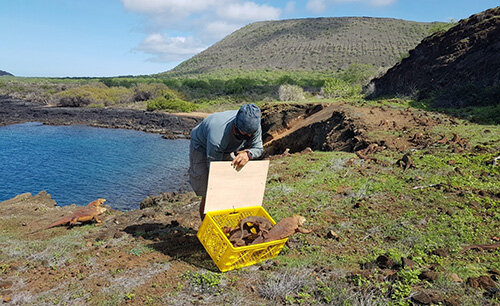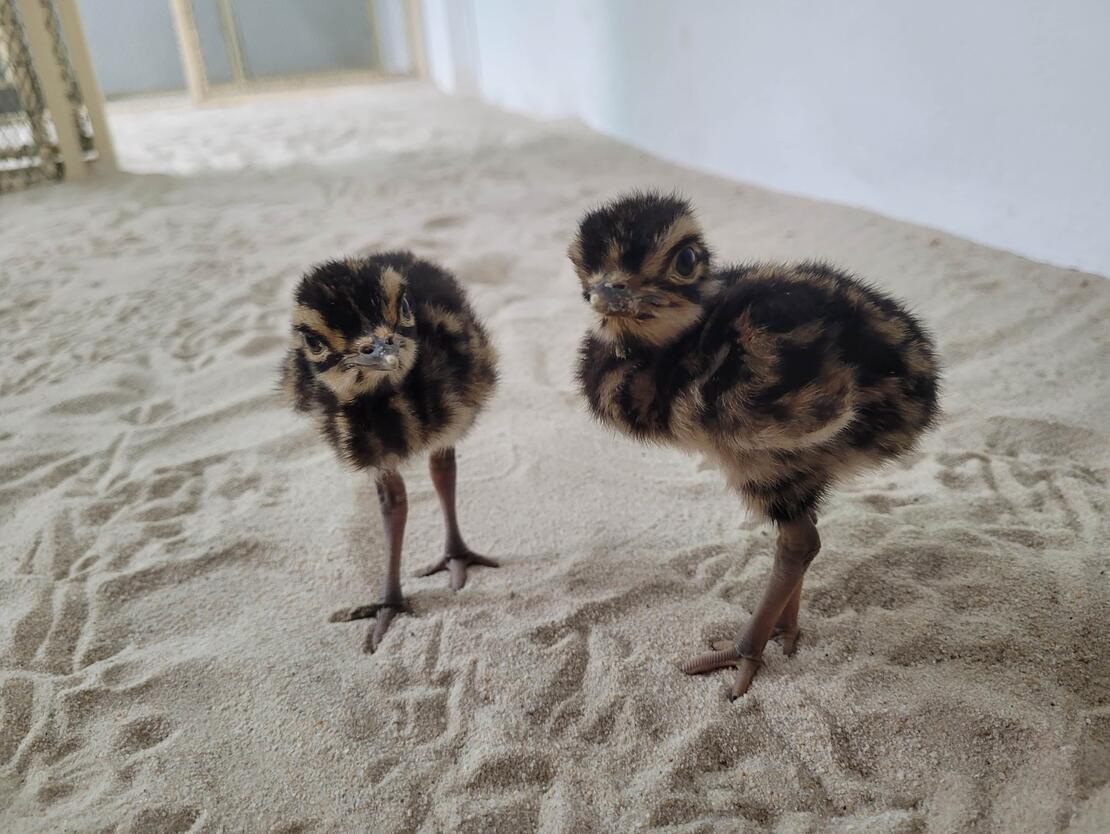PICTURED: Juvenile tortoises released on Santa Fe Island. Photo credit: GTRI.
SANTA Fe, Galapagos Islands, Ecuador. February 26th, 2021. 191 juvenile tortoises have been released on Santa Fe Island in the Galapagos to join another group of tortoises already there in a slow and steady process to repopulate the island with what for thousands of years would have been the dominant group of herbivores.
For 6 years the conservationists at the Giant Tortoise Restoration Initiative (GTRI) have been raising the chelonoidis hoodensis (Española Island tortoise) hatchlings, waiting for the day when they could sail to Santa Fe and release them back into the wild.
A preliminary release of 31 tortoises last year found a 99.8% survival rate for their hatchlings, which the director of the GTRI, Washington Tapia, said helped expedite the introduction program.
Rewilding of the island began all the way back in the 1970s when rangers took action to eradicate the goat population.
After they were discovered, the Galapagos became a frequent rest stop for sailors, who would stop by to snag a giant tortoise for meat provisions. All manner of invasive animals began to populate the islands, including goats, cats, hogs, rats, and more.
These new hatchlings aren’t native to Santa Fe, but Española; however the Santa Fe tortoise has been extinct for at least 150 years, and only two anecdotal accounts from sailors even suggest that there was ever a Santa Fe tortoise.
Regardless, the new Española tortoises are playing the part well, contributing to seed dispersal of native cacti, and spreading across 30% of the island’s mass without creating conflict with the local iguanas over food.
PICTURED: A volunteer lets part of the 461 recently-released iguanas free on Santiago Island. Photo credit: GNPD.
Iguanas on Santiago
Another of the Galapagos’ most famous residents, the land iguana, is making a come back in far greater numbers than the tortoises.
461 land iguanas, having been, like the tortoises, dewormed, cleansed of foreign seed in their stomachs, and microchipped, were released in an area called Puerto Nuevo in an effort to repopulate the island with the reptiles that had gone extinct there in years past.
Danny Rueda, director of the Galapagos National Park, commented in a translated statement, “this action will allow a species considered extinct to be returned to Santiago Island, and the relocation of this species from North Seymour Island is part of an action plan that will allow an ecosystem balance to be restored to this region of the Archipelago”.
“In the coming weeks, rangers will return to the release zone to evaluate the adaptation of the reptiles to their new habitat,” he added.
In 2019, the first group of land iguanas were released, and they got on fine, it was found in a 2020 census. They had established breeding sites, dens, and regularly used trials around two miles from the beach.
Th 2020s seem to be starting off well for the Galapagos Islands.
Continue exploring this topic — Island Extermination: An Untold Story of Conservation Success
Continue exploring this topic — Unlike Humans Lions and Snow Leopards Had a Good Year



